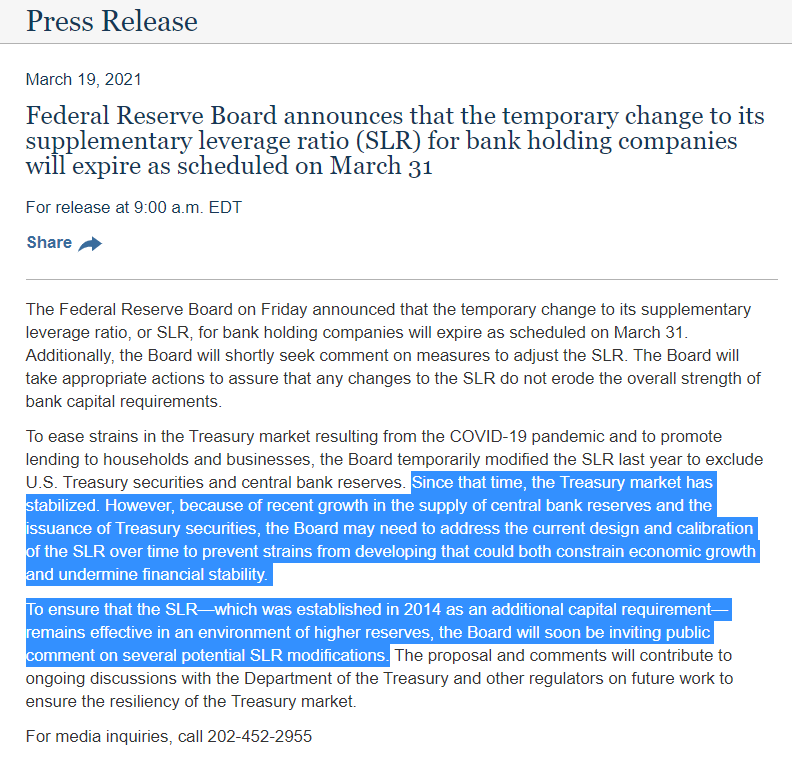A LONG THREAD ON WHERE IS THE FED? Many investors are expecting Fed (coordinated or not) to do something soon (perhaps before futures open). There has been a lot of debate that CB easing can't resolve health issues, but they can help sentiment. Here's what may happen next.
1/11
1/11
Backdrop1: Long gone is the façade the Fed will ignore 👇financial conditions (regardless of driver). Its not much, but the Fed has some flexibility on rate policy side but more importantly can come up w/some creative solutions in its use of the powers granted under 13(3).
2/11
2/11
Backdrop2: One of the reasons why the Fed needs to be preemptive is because some of its crisis fighting abilities have been damped post GFC due to Federal Reserve Act section 13(3) revisions per DFA. That said, from what I understand they could still launch ABC facilities.
3/11
3/11
Backdrop3: In the early days of GFC the Fed resorted to tweaks versus all out easing measures or launching new facilities. In August 2007 it cut the discount rate and not the FF rate and in Jan-2008 did a 75 bp intra-meeting ease (followed by another 50bp at the meeting).
4/11
4/11

Old School Fed: I found this Min-Fed posting (see tinyurl.com/rgyeklr) as a good historical review of potential Fed crisis fighting usage of section 13(3), also see link at the end “Lender of more than last resort” for how the discount window evolved, more later…
5/11
5/11
Old Fed playbook1: In the '02 Bernanke report on deflation (see tinyurl.com/qmyto8g) he provides a laundry list of what they can do to stimulate the economy/markets. We have pretty much done all of them except for buying foreign bonds. Meanwhile Fed can buy munis too.
6/11
6/11
Old Fed playbook2: Since September 2019 the Fed has been providing liquidity with TOMO repo operations and TRM bill purchases (ie notQE). At a minimum the Fed will be inclined to keep these programs for a while longer (and abort tapering repo) while introducing new tools.
7/11
7/11
New Fed playbook1: In my view there is a risk of an intra-mtg ease (as early as today vs allowing mkts to freefall). First off this is a public health concern, but COVID disruptions run the risk of hitting biz CF/working capital. The Fed can encourage discount window use.
8/11
8/11
New Fed playbook2: Given JPM & Quarles want to break the DW stigma (see tinyurl.com/qqpbkzx) Fed could announce it reduces the DW rate to 25bp or even 0 over FF (vs 50) for large banks, maybe further for smaller banks if funds are used to help industries hit by COVID
9/11
9/11
New Fed playbook3: 17 days is a long time to wait for levered investors, so expect FF rate to come down 50bps too (would make DW rate cut be 75-100bp). The Fed could gauge how these measure work as well as monitor COVID into 3/18 where it could always do more if needed.
10/11
10/11
DEFCON1: Its too early to forecast COVID's eco-impact and if there is multiple waves. But Fed is on track to move to DEFCON1 in table (see tinyurl.com/sq65skd) if so they will end up with new ABCs, ZIRP (with tiering) eventual YCC, & credit easing (MBS, CP, & munis).
11/11
11/11
BONUS: If Fed does any or all of the above, they could also improve USD funding access and maybe even one day coordinate USD deval (Treasury uses ESF/Fed buys foreign bonds). FX swapline rate levels should come down and f-rrp rate for FCBs should be slashed to have them buy USTs.
ICYMI 2 good rpts from BPI on what may be next:
tinyurl.com/vrowypz on don't keep your powder dry
tinyurl.com/qova55p on throwing kitchen sink at it
First link suggests Wed. is the day for an intra-mtg ease.
Second link highlights the role of using discount window.
tinyurl.com/vrowypz on don't keep your powder dry
tinyurl.com/qova55p on throwing kitchen sink at it
First link suggests Wed. is the day for an intra-mtg ease.
Second link highlights the role of using discount window.
• • •
Missing some Tweet in this thread? You can try to
force a refresh










